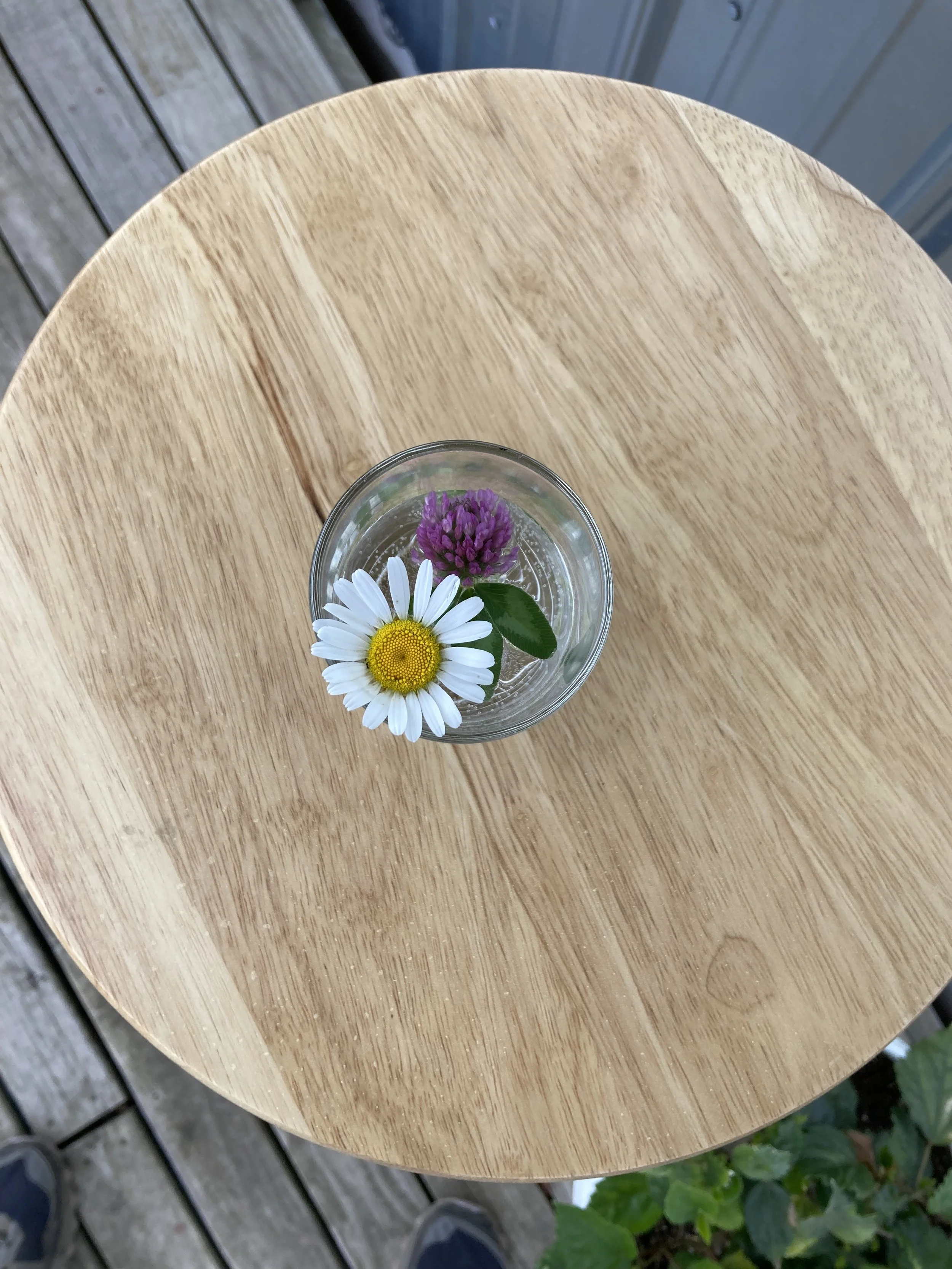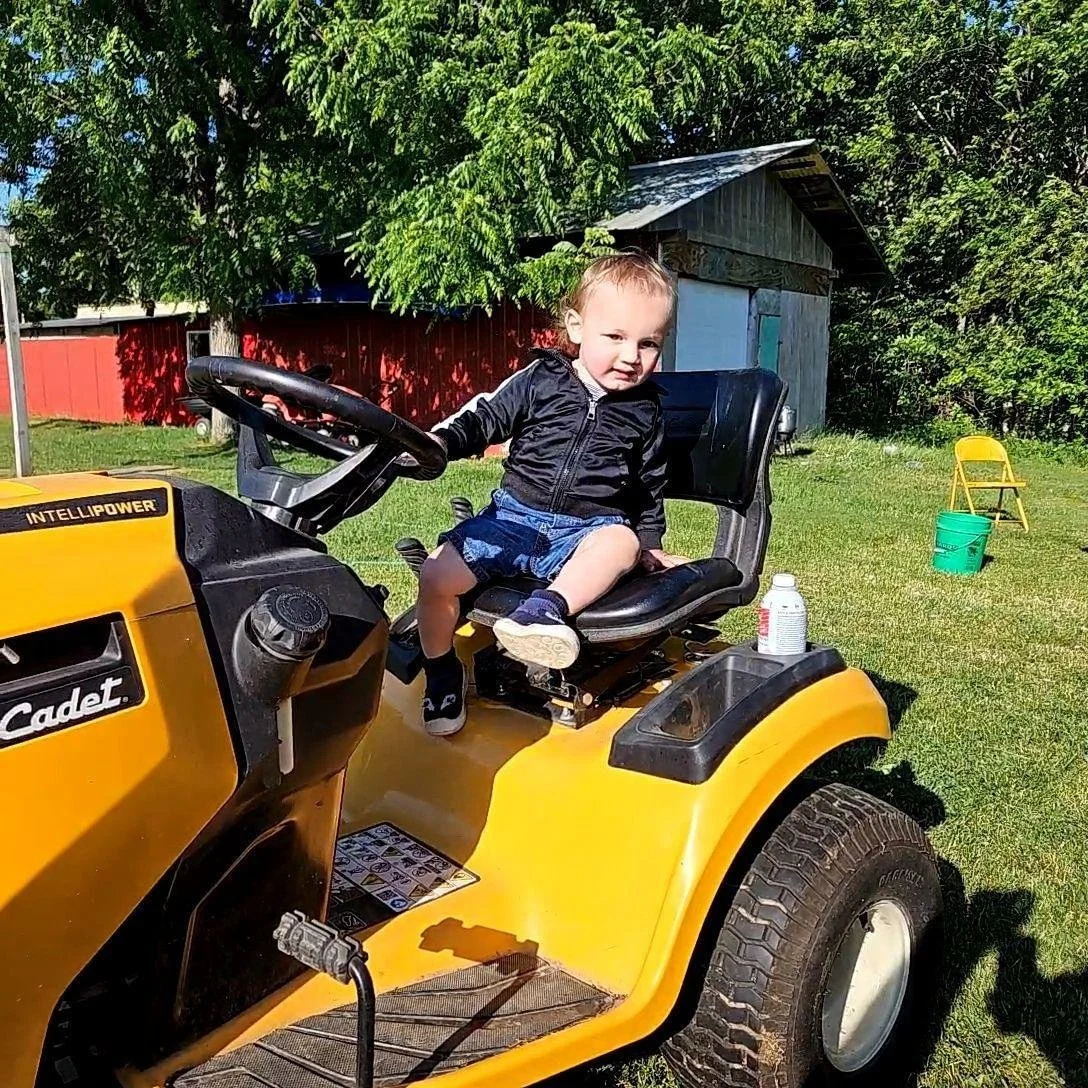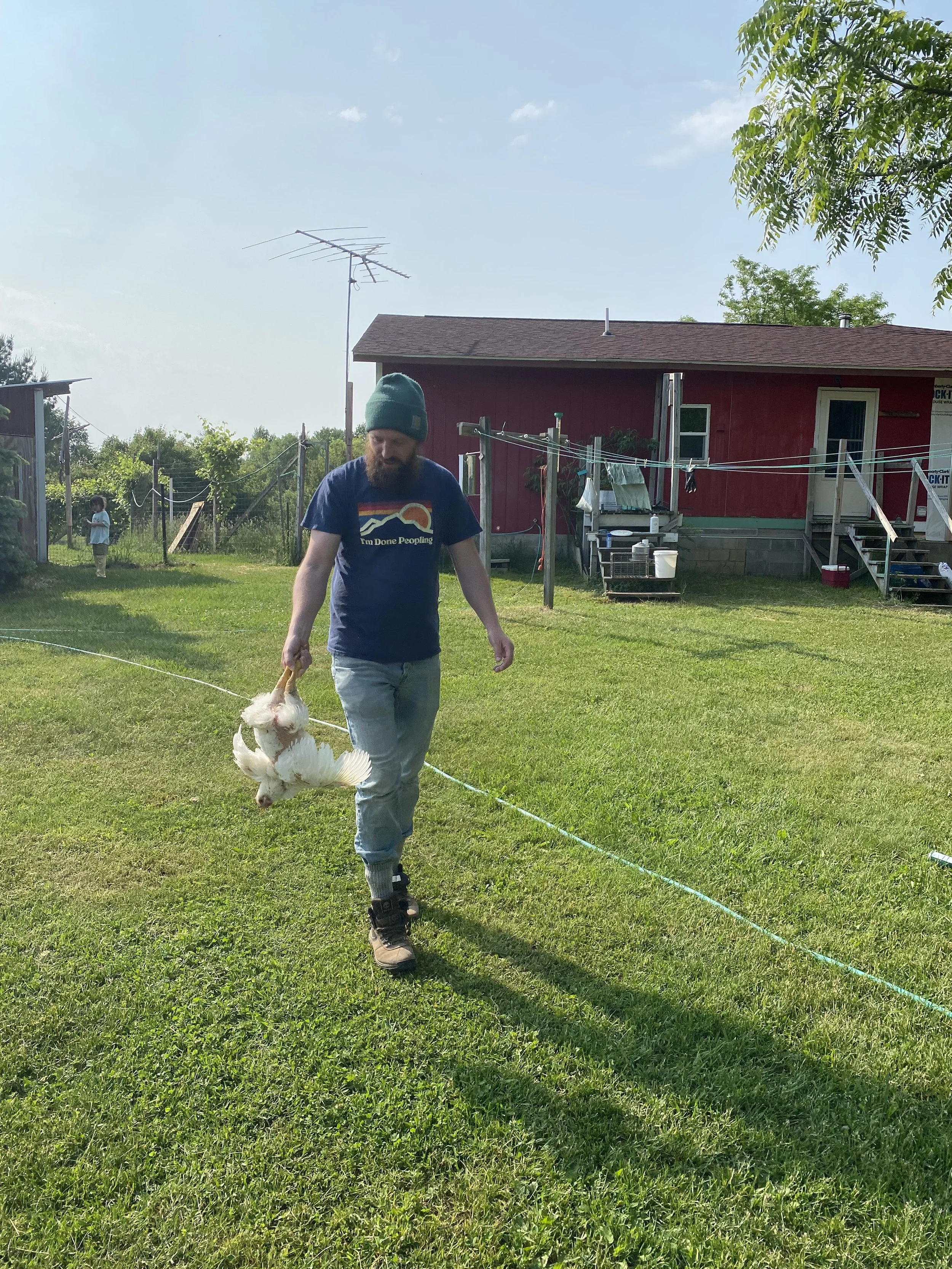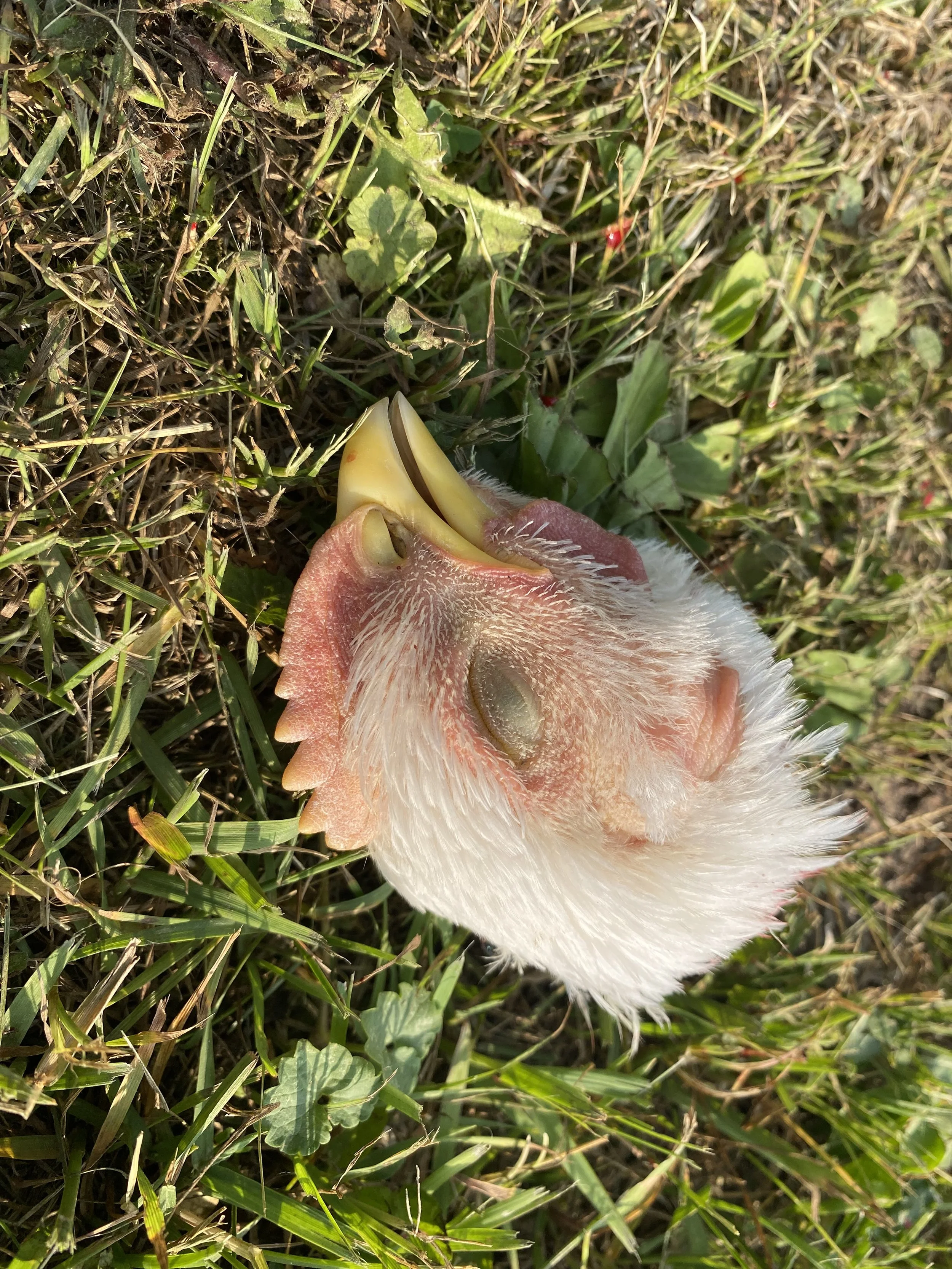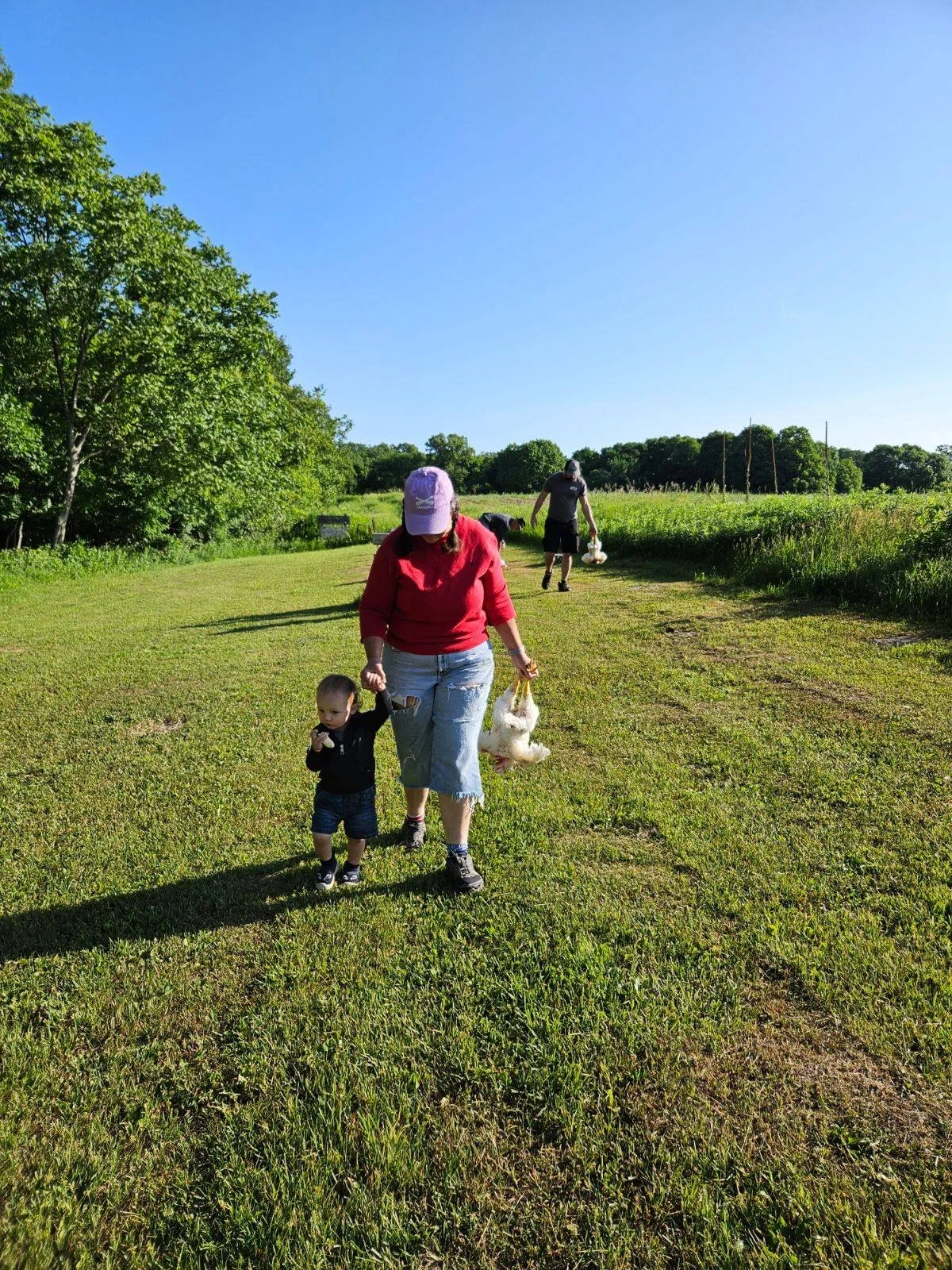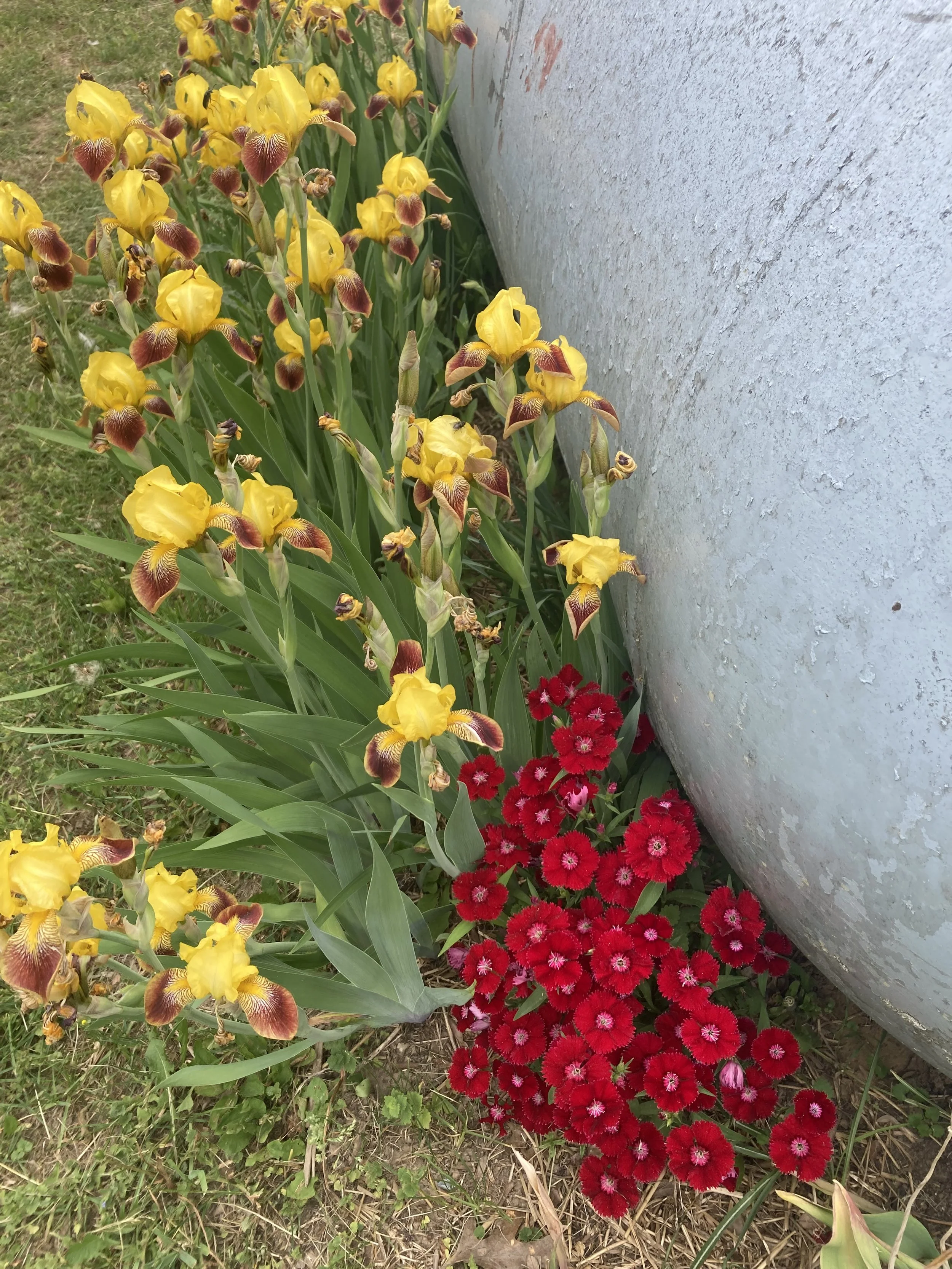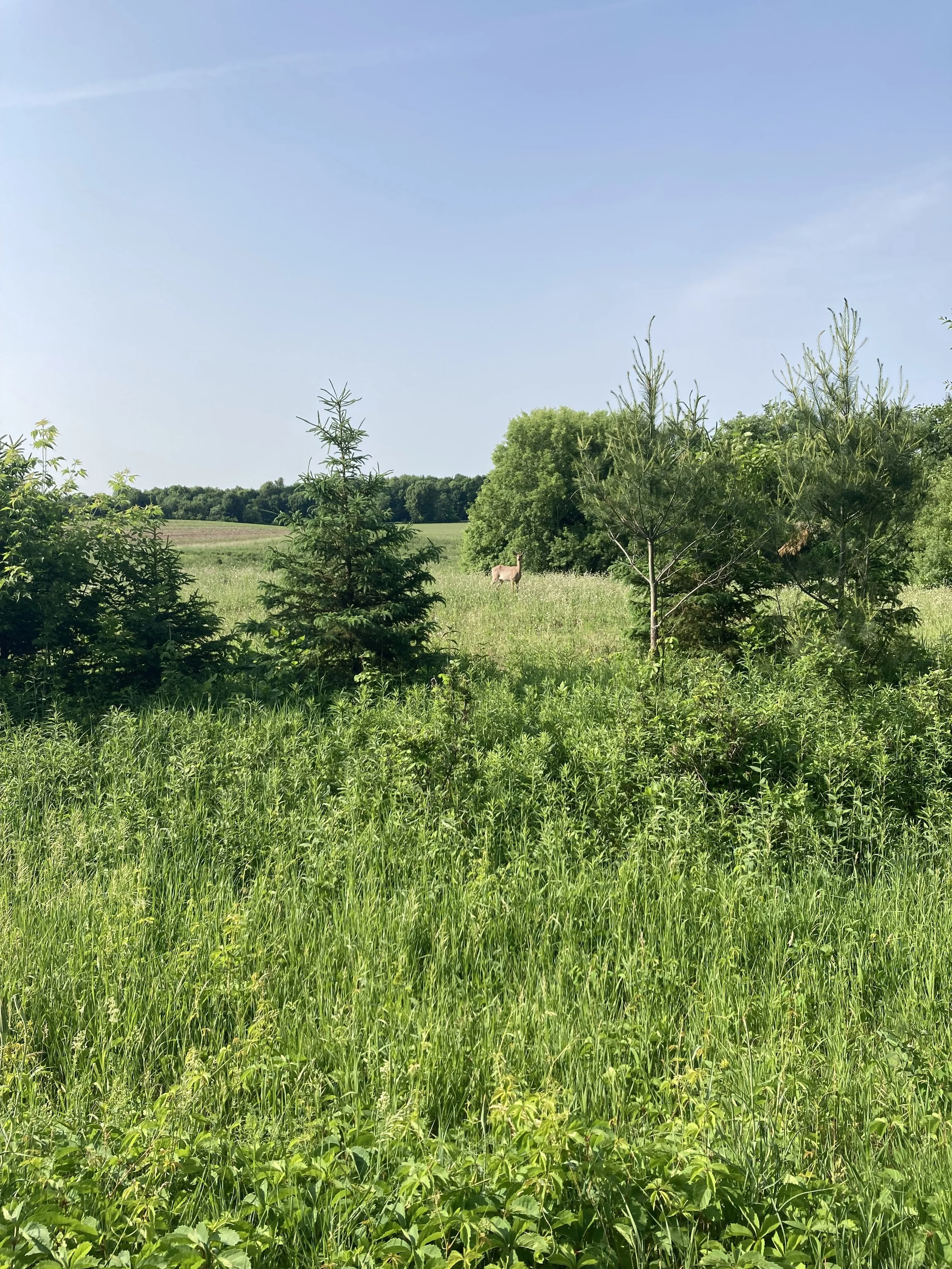Harvest journal: two days, 81.5 pounds of chicken, and some lessons learned
The first few photos are not graphic, but they do get more so as I go along. So if dead birds are not your cup of tea (how’s that for an inappropriate metaphor?!?), STOP LOOKING!
After the Grand Girl left on Saturday, I found this small bouquet awaiting my delight. Charmed, I’m sure.
The GGs got to feed the broilers after the Chosen Few (9, to be exact) went to freezer camp.
The Grand Guy explored the lawn tractor while we worked. He will need a few more minutes before he can reach the pedals.
The first part of the harvest begins with selecting a chicken. Always carry them head-down. It makes the blood run towards their heads and stupefies them. Not only does this make it easier to get them in the killing sack, but it is kinder to the chicken. Our goal is a quick and un-exciting death. If you’ve gotten this far, then you are ready for some blood.
Michael, Matt and Nate did all the beheading. The Grand Girl’s comment on viewing the process was: “chicken heads are pretty cool, if you don’t care about the chicken.”
The Grand Guy liked petting the chickens that didn’t run away, or move. He did put together the loss of heads and no more cluck-clucks.
Matt learned how to get water to 150°, how to dunk a chicken so the feathers come off but the skin stays intact (anywhere from 40-60 seconds), how to pluck bodies and clean legs and feet, and then how to eviscerate. Save the liver! (And heart, and gizzards too.) Artemis ran herd on the girls during this process. We keep young ones far from the burner and pot of hot water.
Persephone learned the dunk-pluck-eviscerate process on Day #2 while Nate ran the Grand Guy. For those who may be curious, the evisceration routine begins with removing the feet, which go into a covered bowl (flies are a reality of the harvest). Then slice down the back of the neck. Turn the bird over and separate the trachea and the throat and crop (a sac where the chicken stores food before it goes to the gizzard) from the neck and chest. Cut both as far down into the chicken as possible. Turn the chicken around so the vent faces you and make an incision just below the line of the breast. Keeping the knife parallel to the breast keeps you from puncturing any viscera. Slice the skin down to the vent (holding it away from the guts - again avoiding slicing into anything in there) and slice around the vent. Then all the guts can be removed by reaching in and gently tugging on them from the back. Removing the throat, crop and trachea makes this part a lot easier. The lungs are attached to the ribs as chickens do not have a diaphragm. You have to scrape out the lungs with your fingers. Some people use a special tool for this. I don’t own that tool. Then the carcass goes into a plastic sack inside the cooler loaded with ice. Remove the heart to a separate bowl. Remove the gall bladder from the liver and add the liver to the bowl. Finally, slice the gizzard in half and cut the meaty part away from the tough inside lining.
I don’t have photos of the next part of the process because everyone’s hands were covered in chicken, so you get to see my efforts at beautifying my LP tank. This is what happened next: A son-in-law was tasked to haul the cooler full of chicken inside. I brought in the bowls of feet and internal organs, as well as knives and other equipment. Michael cleaned up outside. We do not want any strong smell of dead chickens attracting predators to our live chickens! The offal goes into a plastic bag, which is placed inside a second bag and hauled to the trash at the end of our 600’ driveway. All the outside equipment is hosed down and scrubbed. Everything else is washed inside while people grab a bite to eat before getting covered in chicken once again. I disinfect all inside work surfaces with a bleach compound. I clean off the internal organs and feet for packaging and, as soon as I can, I vacuum seal them into a package and haul them to a freezer. Michael cleaned the last feathers from the carcasses and brought them into us girls. I weighed them and then taught my girls how to cut up a chicken. They got to decide how they wanted their parts cut and the size of the packaging. (Boneless/skinless breasts? Wings whole or in parts? How many pieces per package, or package by weight?) The total on Day #1 was 40 pounds and 41.5 pounds on Day #2: that tells you how fast the broilers grow! Two days and eighteen chickens. All packed into coolers and sent home with our children.
The deer have turned red. They are everywhere. I have yet to see a fawn. This is my reality: living in a place where I am surrounded by an abundance of life and death and then more life. There is a lot of death in this world. One of the women to whom I gave some duck eggs admitted she had a hard time thinking of eating them because she could only think of the ducklings that could have hatched from those eggs. I told her that we nourish our ducks so they can nourish us. She ate the eggs and admitted they were delightful. It’s worth knowing how to raise and harvest chickens or beets. I’m so happy my children are willing to learn and take part in this cycle.
